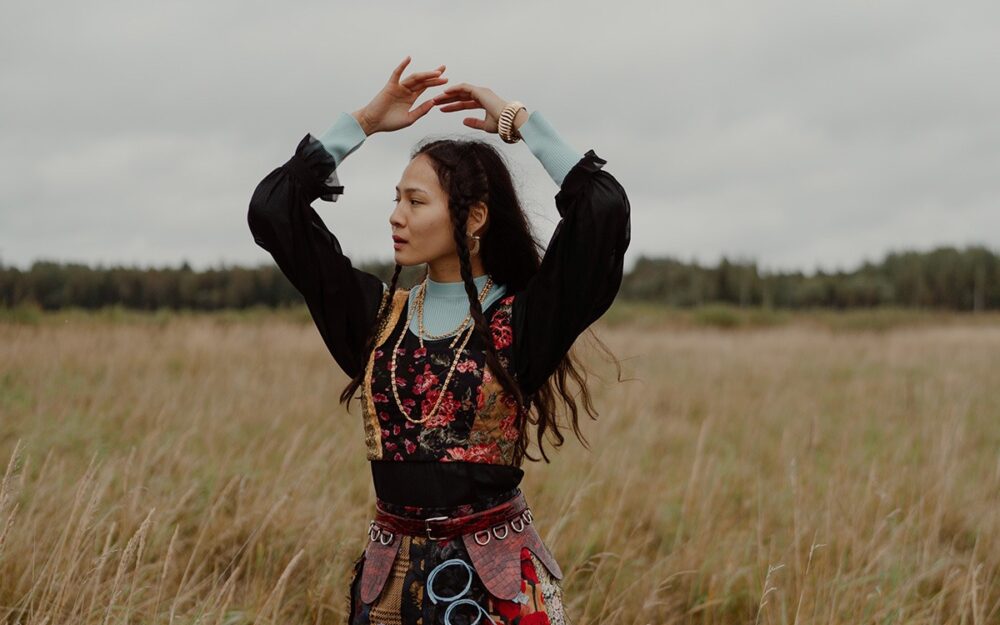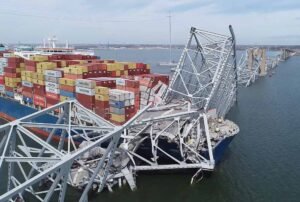
Land rematriation is the return of Indigenous land to Indigenous people. The term, more commonly known as “land back,” acknowledges how colonization contributed to the theft and plunder of Indigenous land and communities—and has grown into an effort to help reclaim stolen lands.
In recent years, the land back movement has grown to include many Indigenous land trusts. These land trusts are a form of climate justice and self-determination which includes honoring Indigenous land-based practices and traditional environmental stewardship. Sogorea Te’ Land Trust is one women-led Indigenous urban land trust leading land return advocacy in what is now known as the San Francisco East Bay.
Himmetka: In One Place, Together
The first piece of land returned to Sogorea Te’ was in 2016 by Planting Justice, an Oakland-based nonprofit that works with formerly incarcerated and recently migrated people. The returned quarter-acre is part of Planting Justice’s organic nursery. It later became the site of the first gathering space for Sogorea Te’. In the local Indigenous Lisjan people’s traditional language, Chochenyo, this gathering space is called himmetka, which translates to “a place where we all gather.”
A himmetka is a concept that is part of an Indigenous epistemology rooted in taking care of one’s guests.
Considering Northern California’s climate vulnerability, Sogorea Te’ has since turned all of their himmetkas on returned land into culturally based climate resiliency hubs for the community during natural disasters. The hubs are made up of converted shipping containers with water catchment systems that store fresh rainwater, first aid supplies, traditional tinctures, and food. “It’s a place for people—not just Native people but for all who live in the neighborhood,” said Corrina Gould, codirector and cofounder of Sogorea Te’.
A himmetka is a concept that is part of an Indigenous epistemology rooted in taking care of one’s guests. In traditional times, Gould explains, when someone visited they would be welcomed, fed, gifted, and honored in ceremony. The modern-day himmetkas as climate resiliency hubs seek to operate similarly. They came to be when Johnella LaRose, codirector of Sogorea Te’, took a deep look at how Black people and other people of color were left to die in New Orleans and across the South during 2005’s devasting Hurricane Katrina; LaRose realized that these resiliency hubs would be critical lifelines so that communities of color in the East Bay would not be subject to the same fate.
Land Return Across the East Bay
Gould explains that land rematriation looks different in an urban setting than in rural ones and is based more on building and sustaining relationships, as land and space is much more scarce in a city. For example, Sogorea Te’ and the City of Oakland have grown a relationship over the past five years. In the fall of 2022, the city returned five acres of Joaquin Miller Park, known as Sequoia Point, to Sogorea Te’. “That land is forever off the speculative market, so we’ll always take care of that land,” says Gould.
Land ownership is a foreign concept to Native people, Gould explains, because Indigenous people thought of themselves as caretakers of the land, rather than its owners.
In working together, both parties quickly realized that no legal mechanisms existed for a city to return the land. “It was quite interesting for . . . all of us to figure out as there has been so much bureaucracy and parameters put around land ownership in this country that it makes it almost impossible to untangle,” says Gould. The two parties eventually came up with a cultural easement—meaning that although the city holds the title deed to the land, Sogorea Te’ will have nearly full access to use the land for educational, environmental, and cultural purposes in perpetuity. This new document allows them to caretake that land forever and is something that the City of Oakland can’t revoke. Gould sees the cultural easement as a tool that other Indigenous land trusts can use across the country to help get land returned.
Sogorea Te’ is also working with a West Oakland nonprofit to get a small parcel of land returned. The land holds a himmetka, 13 fruit trees, and a community garden. In the city of Richmond, the Trust was allowed to grow its traditional medicinal plants in the park. “As Lisjan people, we have not been able to grow or access our own traditional medicine without having to ask permission from park districts,” Gould says. Sogorea Te’ is also acquiring a small cabin in Sonoma County where queer artists of color can have a safe space. The Trust is also hoping to launch the first Chochenyo language institute.
Sign up for our free newsletters
Subscribe to NPQ's newsletters to have our top stories delivered directly to your inbox.
By signing up, you agree to our privacy policy and terms of use, and to receive messages from NPQ and our partners.
Building Pathways and Community
Land ownership is a foreign concept to Native people, Gould explains, because Indigenous people thought of themselves as caretakers of the land, rather than its owners. Indigenous land stewardship is regenerative and is key to climate justice as most land that is being returned is being rehabilitated from the damage it endured during the years it was stolen. The Trust is trying to instill the same approach with the people who now occupy their original territory.
For example, working with the East Bay-based Sustainable Economies Law Center, Sogorea Te’ is developing legal pathways so that everyday people and entities can help in Indigenous land rematriation. That can look like someone leaving their home and land to the Trust when they pass away or an organization giving their title deed to support a land trust. Building these relationships with trust, understanding, and acknowledging each other’s values, work, and mission is critical to successfully ensuring that the land is taken care of for the next seven generations.
Sogorea Te’ Land Trust is also creating a space for dialogue between Indigenous and Black people to build shared understanding of their histories. In April, the Trust worked with Bay Area artist Amara T. Smith to bring Black and Indigenous women together to talk about the tensions between Indigenous land back and Black reparations. “That’s the biggest tension,” says Gould. “We know there’s this big question in the room, and nobody is talking about it.” She points out that both groups have been wronged—not by each other, but by the discriminatory and oppressive systems on which the United States was founded.
At the end of the day, “this is stolen land,” Gould points out. For Black people to receive land in the form of reparations—stolen from Indigenous people—is a tough conversation to get to the root of. “We’re hoping that the conversations we’re putting together will ripple out through the country,” says Gould.
Current efforts in this country— such as bans on ethnic studies, certain books, and critical race theory—are blocking specific communities from telling their stories. Coming together is “the strongest point that we can be at when trying to take care of the next seven generations of our people,” says Gould. Another way in which the Trust is advancing land rematriation is through the Shummi Land Tax. Shummi is a voluntary tax that non-Indigenous people living in the San Francisco East Bay area can pay to help advance rematriation efforts. Besides land returns, the tax would help support the creation of community gardens, ceremonial spaces, community centers, and more.
Returning land to Indigenous people is a way for the land to begin to heal itself. Gould’s great-grandfather was one of the last original speakers of the Chochenyo language. “This land, just like any other land with languages, yearns to hear that original tongue spoken,” Gould says. Learning how to plant again and live with the land is inherently part of human nature—which has been forgotten amid colonization, industrialization, and capitalism. Land rematriation, she continues, “really is bringing people back so they can remember who they are.”












